How to fairly measure the flavor of boutique coffee? Who decides whether the coffee beans are good or bad?
Professional coffee knowledge exchange more coffee bean information please follow the coffee workshop (Wechat official account cafe_style)
"how do you like this cup of coffee? "
Coffee novice: "sour and sweet, fragrant ~"
Coffee glutton: "this coffee has the sour taste of plum, the aroma of whisky, and the sour aroma of berries, mangoes and citrus, plus a little sweet taste of chocolate." The aroma of whisky will be more obvious when it cools down. "
Wait a minute... Is this the same cup of coffee? Why are the tastes so different between two people? Are you in charge of these subtle tastes? Or who's in charge? Don't worry, let's listen to the editor give you detailed instructions.
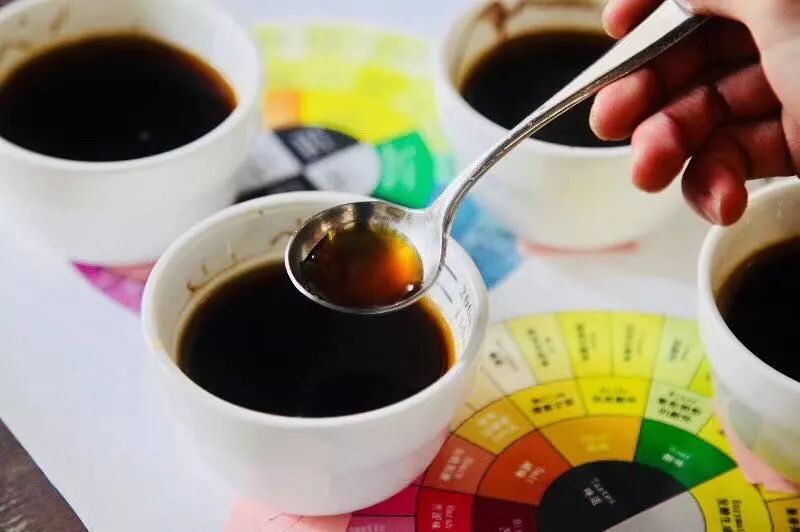
Who decides the taste of boutique coffee?
The flavor of coffee is identified by a group of "cup testers" who have passed professional training and testing. a number of cup testers systematically evaluate the flavor, taste, balance and aftertaste of coffee, and score the coffee, which is called "cup test".
The purpose of the cup test is to standardize the aroma and taste of coffee as much as possible. The method is to ask cup testers who have received professional smell and taste training to evaluate the "dry aroma", "wet fragrance", "flavor", "aftertaste", "acidity", "grease", "consistency", "balance", "cleanliness", "sweetness" and "comprehensive consideration" of coffee according to the standard process commonly used all over the world.
According to the SCAA rating standard of the American Fine Coffee Association, the cup tester will give the above items a score of 6 to 10, with an interval of 0. 25, 6 to 6. 75 is OK; 7: 7. 75 is good; 8: 8. 75 is great; 9: 10 is the light off! Basically, a score of 8-8.75 is considered a very good coffee!
People need professional training and testing to be certified as a cup tester. Smell and taste are not only sensitive, but also can compare a score, which is like the cup tester's common language in the world, talking about the intensity and level of taste, and so on.
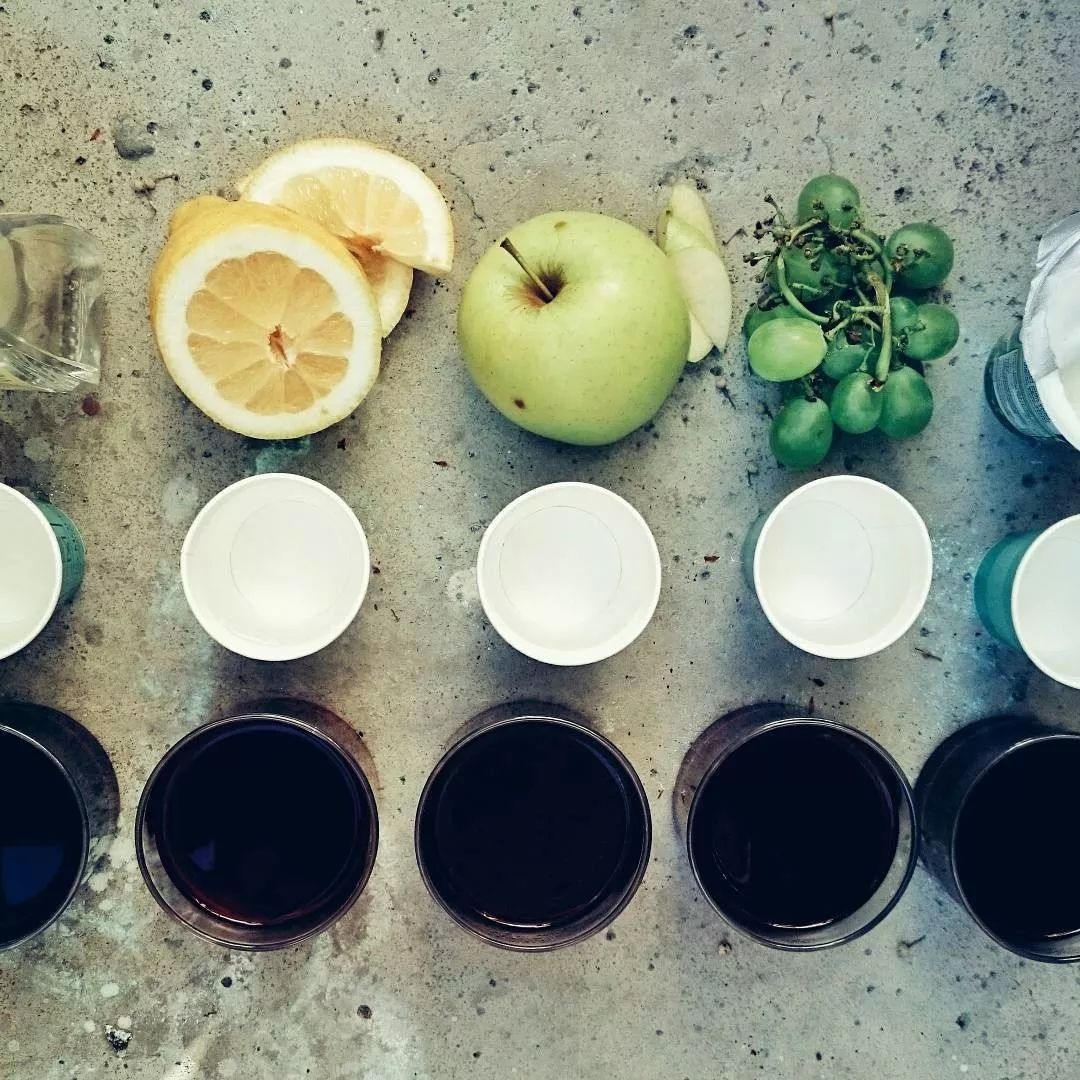
How to test the cup of boutique coffee?
1. Grind coffee beans
First of all, we will grind the coffee beans to be tested into powder. the particles of the powder should not be too thick or too fine. The coffee powder can pass through the Chinese standard No. 20 sieve (0.85mm) with a pass rate of between 70% and 75%. Because this is currently internationally recognized as having the best extraction rate of coffee powder size.
At this time, the cup tester will start to smell the dry aroma of coffee powder and record what aromas he smells, such as litchi, wine, sweet-scented osmanthus and so on. Just don't write me the aroma of coffee.
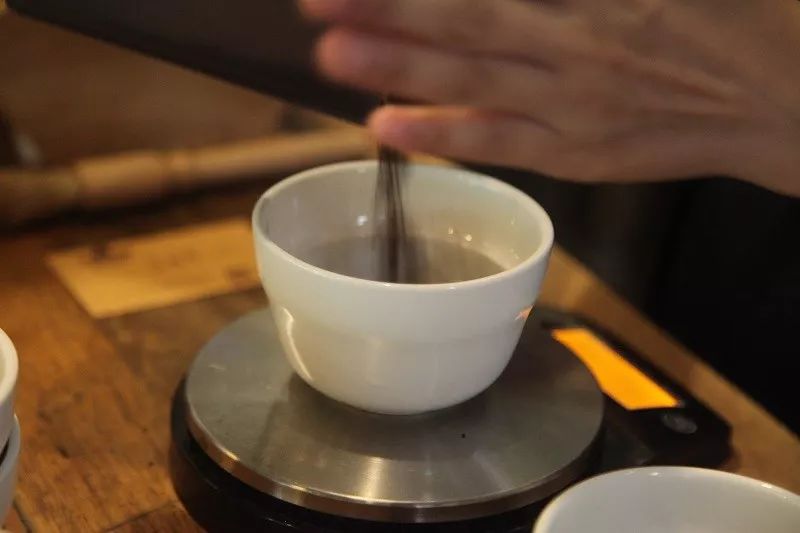
Ground coffee powder
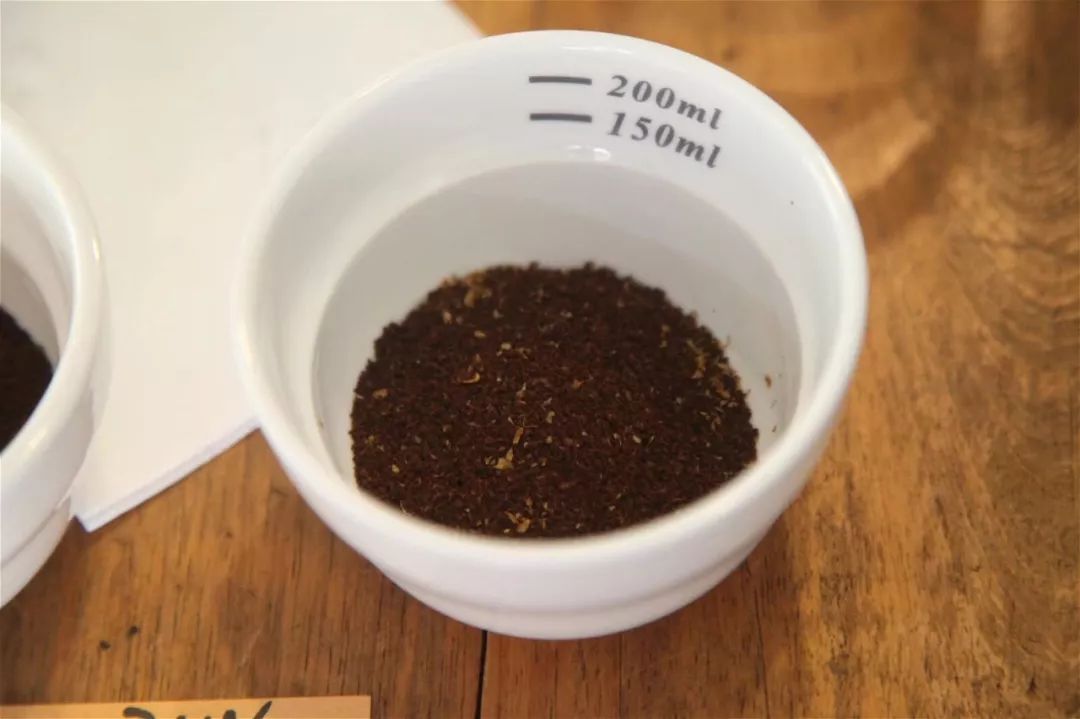
Smell dry incense
2. Water injection
After smelling the dried incense, we will add hot water to each cup of coffee powder. The temperature of the hot water is 94 degrees Celsius, pour water to the full cup, the ratio of powder to water is 18.18, and let the coffee powder soak for 4 minutes.
Oops! Why not hand flush? Isn't hand brewing the most common boutique coffee?
This is because there are too many changes in hand brewing, which will affect the taste of coffee, and the technical skills of hand brewing are not within the scope of the cup test, so we need to find a way that can brew coffee and lead to various levels of flavor. but it is simple enough not to be affected by any technical level, that is to soak in hot water directly!
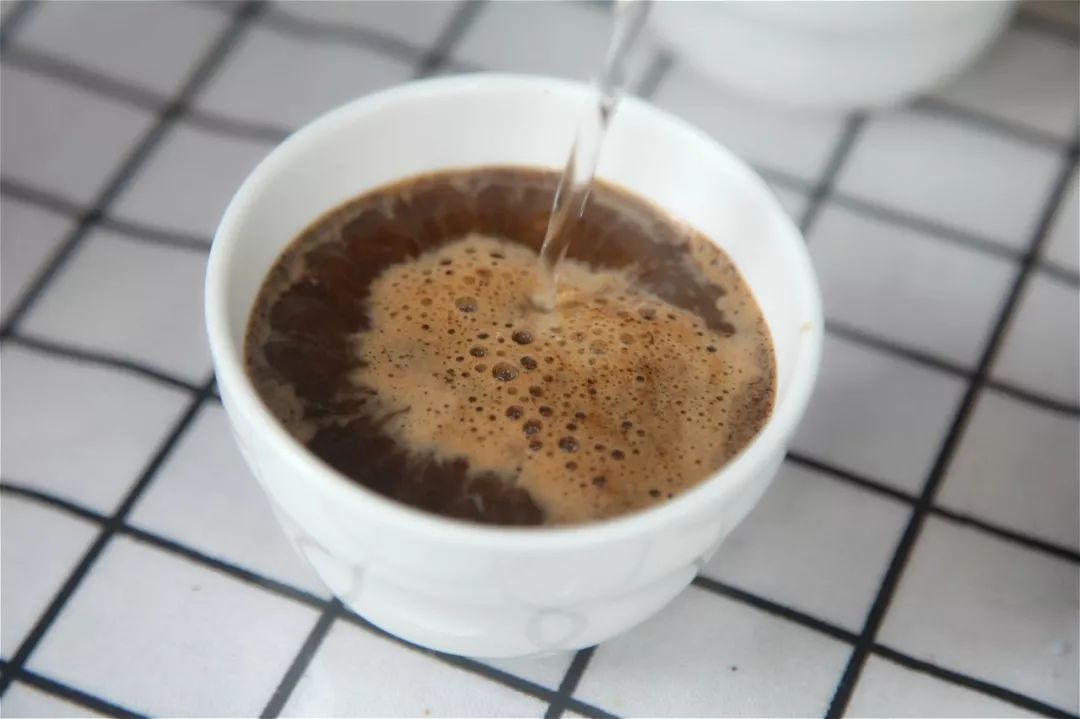
3. Broken dregs and wet incense
Some cup testers will smell the wet fragrance soon after pouring hot water, others will smell the wet fragrance after 4 minutes of coffee powder precipitation and "broken residue", and there are both. This is mainly because the aroma is affected by the temperature and the degree to which the coffee is extracted by water.
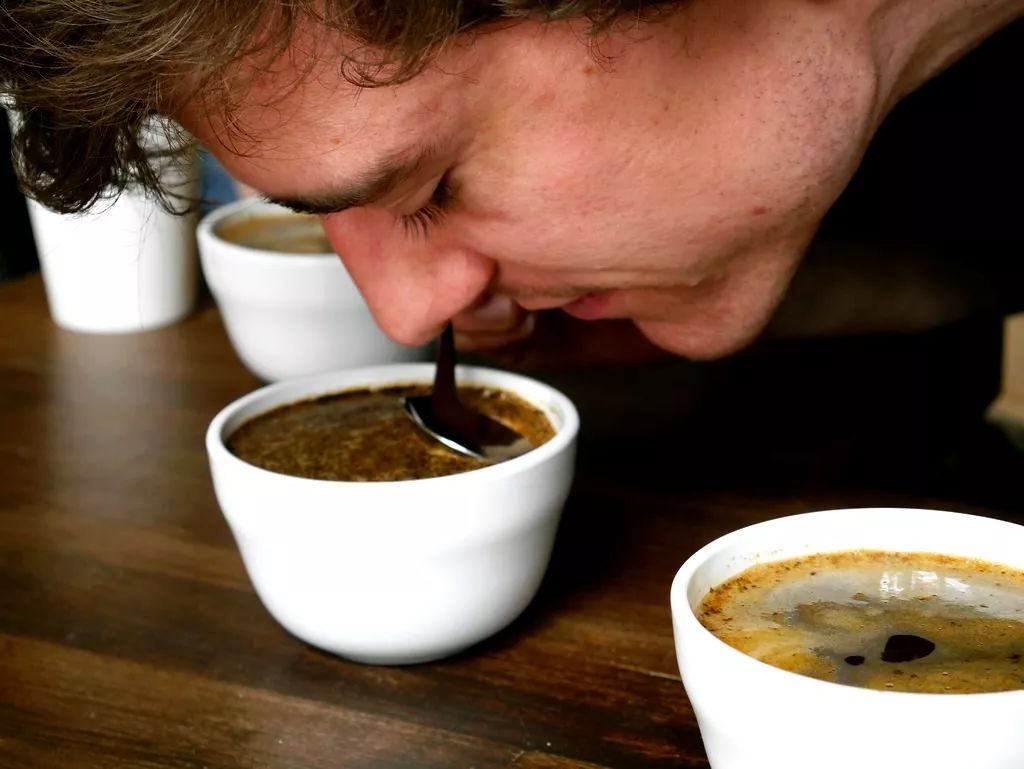
Smelling damp incense with broken residue
4. Dredging slag
The so-called "salvage residue" refers to using a spoon to test the unprecipitated coffee powder, foam, etc., on the surface of the bowl, and to pick it up with two spoons in a handsome posture.
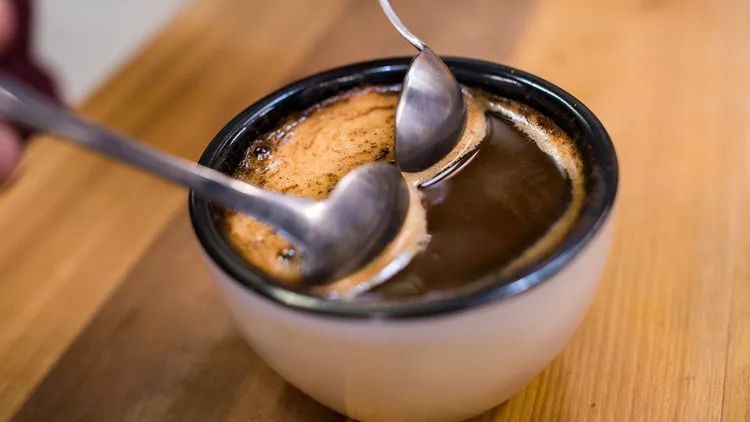
Dredging slag
And then you can start drinking.
5. Sipping
The cup tester may drink differently than you think. He would pick up a spoon and scoop it out and then "whew!" "sucking coffee into your mouth loudly is the kind of drink that you can imagine. If a child eats soup like this, he will be hanged up by his parents. The reason is that this way of drinking can absorb the coffee liquid into the mouth and then quickly atomize, and let the coffee have the maximum contact area with the oral taste buds, so that the taste buds can fully feel the most levels of flavor.
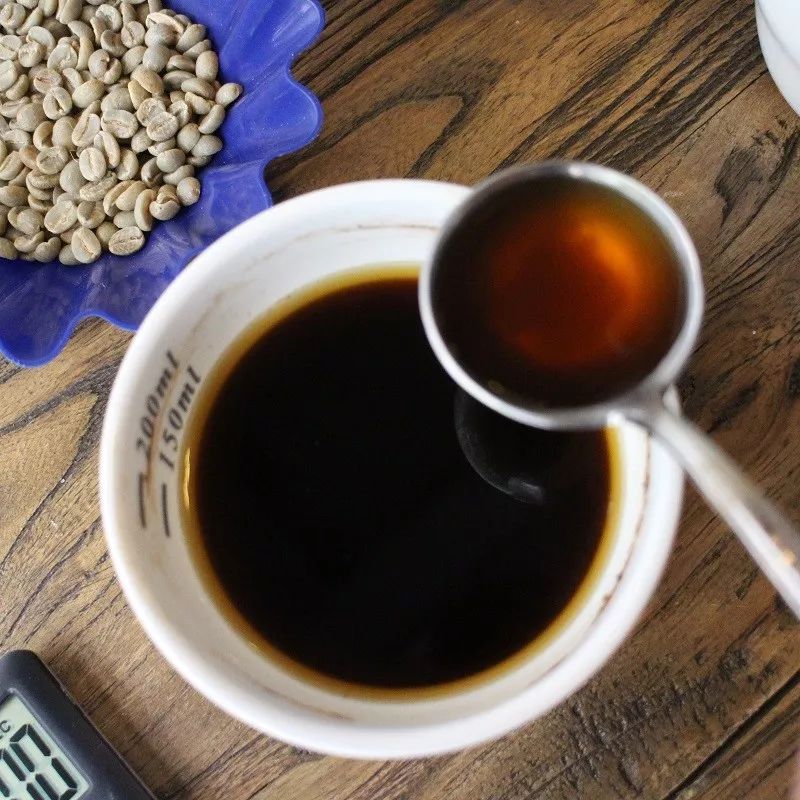
6. Cup test score
The common flavors of boutique coffee include nuts, caramel, a variety of fruit flavors, milk flavor, wine flavor, etc.; the cup tester will also evaluate the level and quality of the sour taste, that is, the "sour" part. Although some friends do not like sour coffee, but in boutique coffee, sour is a taste worth tasting carefully.
"Fatty feeling" refers to the oil extracted from boutique coffee. More oil will drink meekly, and too little oil will feel water and water. But the oil is also pay attention to the quality, gentle fragrance mellow is not greasy, is the best.
Consistency, balance, cleanliness, and so on, are the more professional considerations, which are far away from ordinary enthusiasts, so we will not discuss them in depth here. To put it simply, consistency refers to whether each cup sample has a different taste and which cup is defective? Balance refers to whether each item of coffee is balanced, for example, the acid is bright but will still turn sweet? The touch is sticky but not astringent? Are the various flavors of coffee harmonious? And cleanliness is a very important and necessary condition for fine products-that is, defective taste without defects and stains (complete freedom from taints or faults), coffee with spoilage, earthy taste, medicine iodine taste, fermented acid, rubber, onion, astringency and other bad taste and touch, all indicate that it is not clean enough.
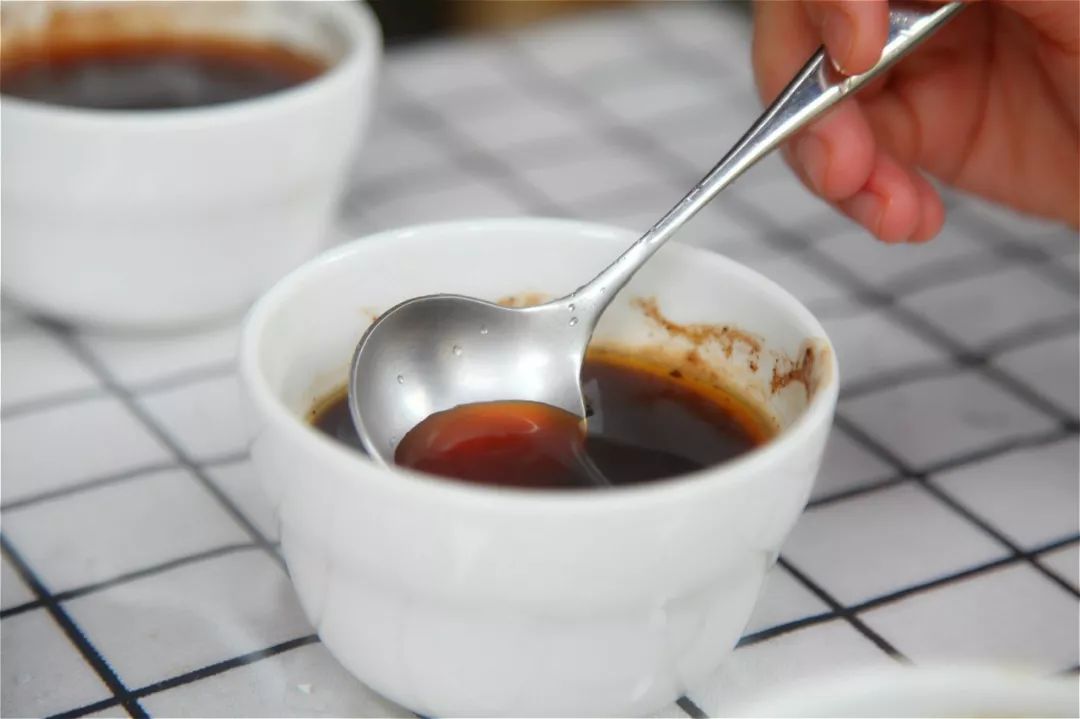
Finally: does a cup of high-score boutique coffee necessarily taste good?
The taste of boutique coffee is the result of comparison and discussion after independent evaluation by a group of cup testers. It is true that many coffee lovers may not be able to drink all the flavor and taste, on the one hand, in addition to the sense of smell and taste has not been fully developed, the other part is also related to coffee baking, grinding, brewing technology, and professional cup testers because they often drink coffee, in the taste orientation and the ability to accept various flavors, there will be a certain degree of "alienation from the masses", so the editor will advise you to try Finding out your favorite beans is the right way, and you don't have to be too obsessed with the cup test score. after all, no matter how high the coffee cup test score is, it will be in vain if it doesn't suit your taste.
END
Important Notice :
前街咖啡 FrontStreet Coffee has moved to new addredd:
FrontStreet Coffee Address: 315,Donghua East Road,GuangZhou
Tel:020 38364473
- Prev
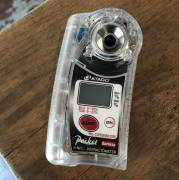
How to use the ATAGO TDS measuring instrument? How to calculate gold cup extraction | Coffee extraction
Professional coffee knowledge exchange more coffee bean information Please follow the coffee workshop (Wechat official account cafe_style) Today a fan asked Qianjie Coffee, how should I use the TDS meter for coffee? So today, Qianjie Coffee would like to share with you how this instrument is used and what is its use.
- Next
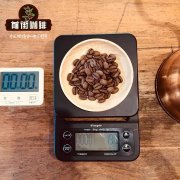
Which coffee producing countries mainly produce what kind of beans?
Professional coffee knowledge exchange more coffee bean information please follow Coffee Workshop (Wechat official account cafe_style) Angola is one of the fourth largest coffee producers in the world. Although it produces only a small amount of Arabica beans, it is famous for its high quality. The coffee produced has a rich taste and mellow flavor. Before the independence of Angola, food was not only self-sufficient, but also exported in large quantities. It is known as Southern Africa.
Related
- A complete list of coffee bean names and their meanings! What is Yejia Shefi coffee? Where is Mantelin coffee?
- What grade does Arida Manor Kaduai coffee beans belong to? What treatment is Arida ASD slow anaerobic sun exposure?
- The milk tea cup becomes smaller?! Overlord Tea Girl launches a new "Return to Yunnan" series
- Accused of selling counterfeit and high-priced coffee beans! Well-known boutique coffee brand "Oukelao" bowed and apologized!
- How to make espresso dumplings? Can I eat coffee and glutinous rice balls together?
- Save the unformed and stagnant powder cakes in one second! What is the problem with stagnant water in the powder bowl of the espresso machine?
- What does hand-brewed coffee stop mean? Why is it not recommended to make coffee by hand?
- Is it normal to smell like coffee? Why does coffee smell like alcohol? What's wrong with the strong smell of cold extract ice dripping ice brewed coffee?
- How to solve the problem that hand-brewed coffee extraction takes too long? Why is the water flowing so slowly when making coffee?
- The main points of making Australian white coffee, the proportion details, how does Australian white properly foam and blend the flowers?

